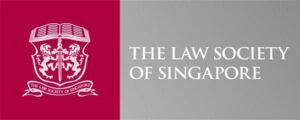The Constitution of Singapore
Contents
The information in the Legal Fact Check Service is provided as a public service by the Law Society of Singapore. The information presented on this site is strictly for information. It is not legal advice and should not be treated as an alternative to seeking legal advice from your lawyer. The information provided in the Legal Fact Check Service is not a definitive analysis of the subject and professional legal advice should always be taken before any course of action is pursued.
Whilst the information presented is considered to be correct at the date of publication, changes in circumstances after the date of publication may impact on the accuracy of the information. The Law Society of Singapore reserves the right to amend any content at any time, at its sole discretion, without prior notice.
The Law Society of Singapore shall not be held liable for any damage or loss of any kind, howsoever caused as a result (direct or indirect) of the use of the Legal Fact Check Service, including but not limited to any damage or loss suffered as a result of reliance on the contents contained in or available from this site.
The Constitution of Singapore
Following Singapore’s separation from Malaya on 9 August 1965, a makeshift Constitution for the newly independent state of Singapore was passed on 22 December 1965, which comprised three separate documents: (a) the Constitution of the State of Singapore 1963; (b) the Republic of Singapore Independence Act 1965; and (c) portions of the Malaysian Federal Constitution imported through the Republic of Singapore Independence Act (collectively referred to as ‘the Singapore Constitution’). Subsequently in 1980, the Attorney-General issued a Reprint of the Singapore Constitution, incorporating all amendments that had been made up to 31 March 1980 into one single, composite document for the first time. Here are some key facts to note about the Singapore Constitution.
Facts
What is a Constitution?
A constitution is defined as a collection of rules that determine the creation and operation of a government and its institutions. Under Article 4 of the Singapore Constitution, the Singapore Constitution is the supreme law of the land; all other laws that are passed must not be in conflict with the Singapore Constitution.
Constitutions may be unwritten or written; for example, the United Kingdom has an unwritten constitution, while countries like Singapore and the United States have written constitutions.
What functions does the Singapore Constitution serve?
First, the Singapore Constitution provides for the functions and powers of the Executive, Legislature and Judiciary (commonly referred to as the 3 branches of government) in Singapore. The principle of separation of powers, which distributes state powers among the 3 branches, is recognised in the Singapore Constitution. While the Singapore Constitution is the source of the government’s power, it also functions to limit the government’s power through the inclusion of safeguards and procedures that must be followed before certain powers can be exercised.
The Singapore Constitution also functions to protect minority interests, through the Presidential Council for Minority Rights which ensures that bills passed by Parliament do not discriminate against any racial or religious community; minority interests are also safeguarded through other means such as the Group Representation Constituencies (GRCs) to ensure minority representation in Parliament.
Finally, the Singapore Constitution plays an important role in protecting the fundamental rights of individuals. These include the freedom of speech, assembly and association; equal protection under the law; and freedom of religion.
The infographic below outlines the key functions of the Singapore Constitution.


